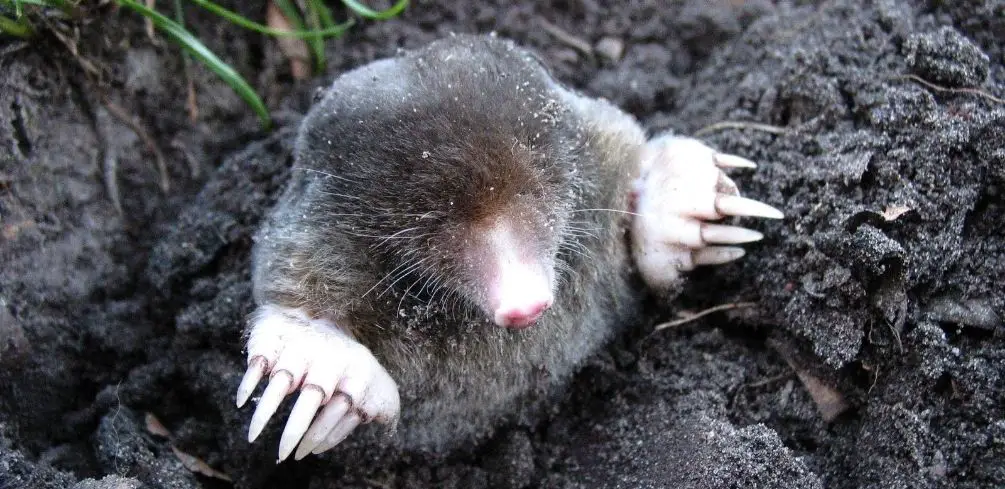Shrews and voles are the most common relatives to moles. Many people may not differentiate them from moles mainly because they are all mouse-like and are commonly found in the ground. It is important to know which animals you got in your garden to know how to control them.
Walk with me through this article as I expound on each mole relative.
Shrews
Shrews are 4 to 5 inches long are smaller than moles. But just like moles, they are insectivorous, eating earthworms, grubs, and other unpleasant insects.
They are busy all hours of the day and night to consume and maintain the demands of their metabolism that is even higher than that of moles. They will and do devour everything they can get their hands on to do this.
Shrews, unlike moles, are sometimes seen running above ground in search of food. They frequently use tunnels dug by voles, moles, or chipmunks.
Gardeners should not be concerned about them because they are useful to the landscape. Use snap-type mousetraps baited with raw beef, ham, bacon, peanut butter, or chocolate if you want to keep shrews under control.
Shrews lack the huge paddle-like feet of moles because they do not dwell in a fossorial environment. They have elongated heads, narrow snouts, and sharp noses, just like moles.
Their ears are small and, depending on the species, may or may not be visible.
Shrews have powerful smell glands that they utilize to mark territory, attract mates, and keep predators away. Surprisingly, certain shrews, including the short-tailed shrew, have venomous bites that aid in capturing prey.
On the other hand, humans are not harmed by the bite, except for some little irritation.
Shrews hunt under the forest floor’s leaf litter or in grassy regions, frequently exploiting the runs and burrows of voles and, on rare occasions, moles. Shrews are rarely seen alive, although they are occasionally found dead on a forest path or, more commonly, when a family cat brings them to a house.
Shrews’ high-pitched squeals can occasionally be heard from leaf litter when two shrews collide, or a dog discovers one while sniffing in the litter.
Classification
Shrews can be classified into three major groups: the Soricinae, Crocidurinae, and the Myosoricinae subfamilies.
Other varieties are The North Short-Haired Shrew, The Least Shrew, and the Pygmy Shrew.
Some shrews are generalists, whereas others are specialized for certain environments. With over 5 inches, the Northern Short-tailed Shrew (Blarina brevicauda) is one of our biggest shrews.
They may be found in a broad range of settings, from woods to fields, widely distributed.
Northern Short-tailed Shrews and the Least Shrew (Cryptotis parva) are important food sources for a range of predators, including snakes, owls, hawks, weasels, and foxes.
The Pygmy Shrew (Sorex hoyi) is the most fascinating shrews, as it is the smallest mammal in North America. This shrew is about the size of a coin, weighing between 2 and 4 grams.
The Masked, Smokey, and Southeastern Shrews are three additional shrews.
Voles
They are characterized by their short thick bodies with stubby faces and short ears. Their short tails are in keeping with their ground-based habitat.
The majority of them are semi-fossorial, which means they dwell on or below the earth.
They don’t climb, and they don’t get into houses or barns. Voles, being herbivores, graze on plant material in grasses, fields, and meadows, such as grass stems and forbs. If you want to see them, you merely need to go down to their level to view their runs and grass clippings.
Like the western Loudoun Woodland Vole (Microtus pinetorum), a few species dig tunnels beneath the forest floor and consume roots, tubers, and mushrooms.
The field mouse, commonly known as the Meadow Vole (Microtus pennsylvannicus), is the most well-known vole in North America. From the mid-Atlantic to sections of Canada, they can be found in any grassy meadow and field.
Differences
It’s also worth noting that, while voles are rodents, moles are not. Voles are plant-eating herbivores who solely consume plants.
Moles are carnivorous, which means they eat insects, grubs, and worms. Despite their differences, both pests inflict collateral harm to grass and ornamental plants.
The type of damage a pest causes can help you figure out which pest is threatening your home. If your plants don’t appear to have been nibbled on, but your grass has furrows of dirt, moles likely are to blame.
On the other hand, Voles consume plants but do not burrow like moles. Voles consume grass, flower roots, bulbs, and seeds, among other things.
They will even chew the bark off trees and plants if food is short.
Final thoughts
Moles, voles, and shrews are little animals that make a big difference in the natural world and play an important part in their ecosystems. They provide aeration and fertilizing services to enhance soil conditions.
They are an important food source for other animals too. I hope this article has helped you understand the mouse relatives better.



Очень трендовые события модного мира.
Важные события лучших подуимов.
Модные дома, лейблы, гедонизм.
Лучшее место для модных людей.
https://fashionvipclub.ru/
Абсолютно стильные события мира fashion.
Абсолютно все новости самых влиятельных подуимов.
Модные дома, лейблы, высокая мода.
Свежее место для стильныех людей.
https://sneakersgo.ru/
Абсолютно важные события мира fashion.
Важные новости самых влиятельных подуимов.
Модные дома, бренды, высокая мода.
Самое лучшее место для модных людей.
https://urban-moda.ru/
Абсолютно актуальные новости моды.
Все эвенты всемирных подуимов.
Модные дома, бренды, гедонизм.
Самое приятное место для трендовых людей.
https://worldsfashion.ru/
Несомненно свежие события индустрии.
Актуальные мероприятия мировых подуимов.
Модные дома, лейблы, гедонизм.
Свежее место для стильныех хайпбистов.
https://worldsfashion.ru/